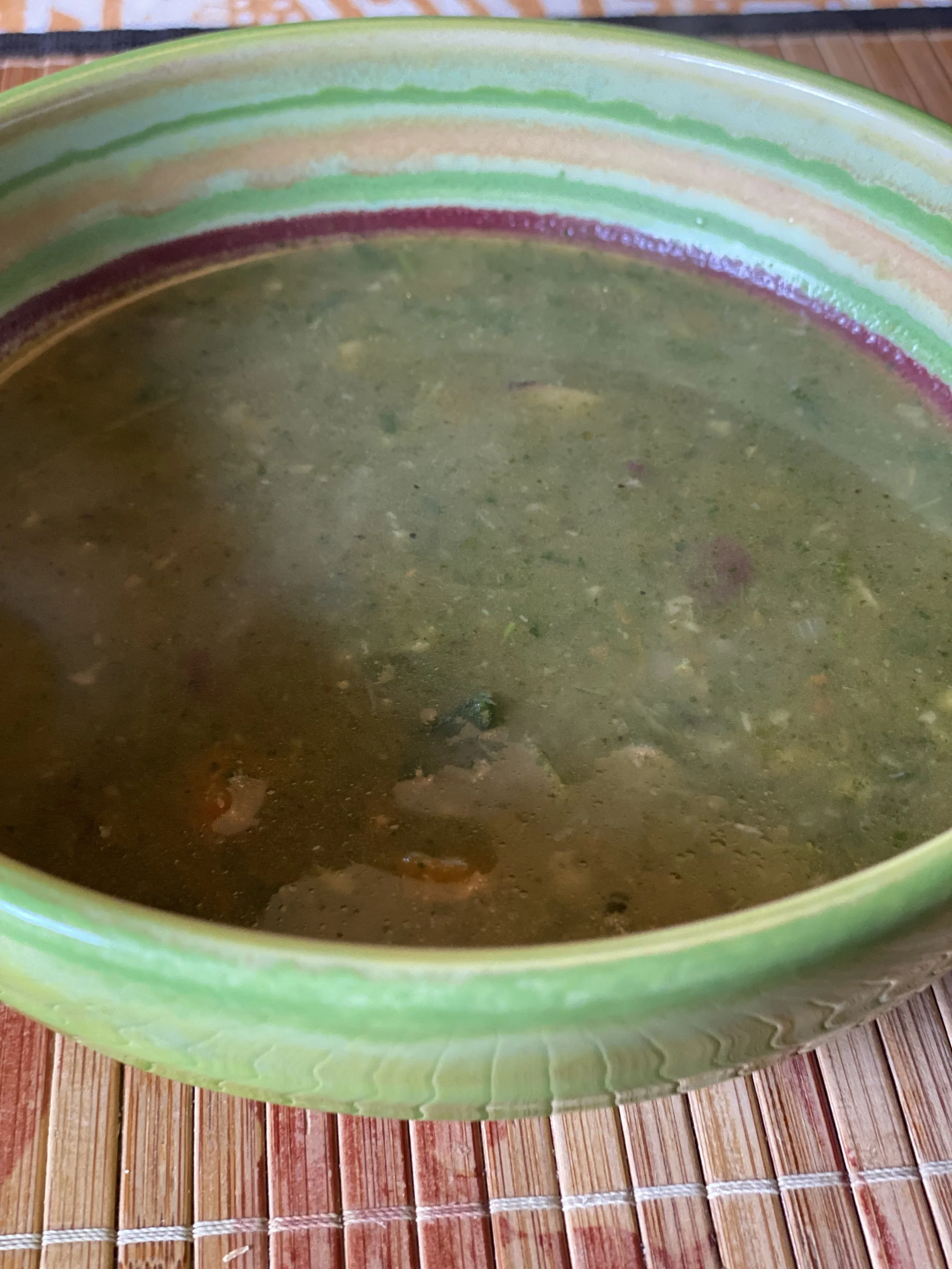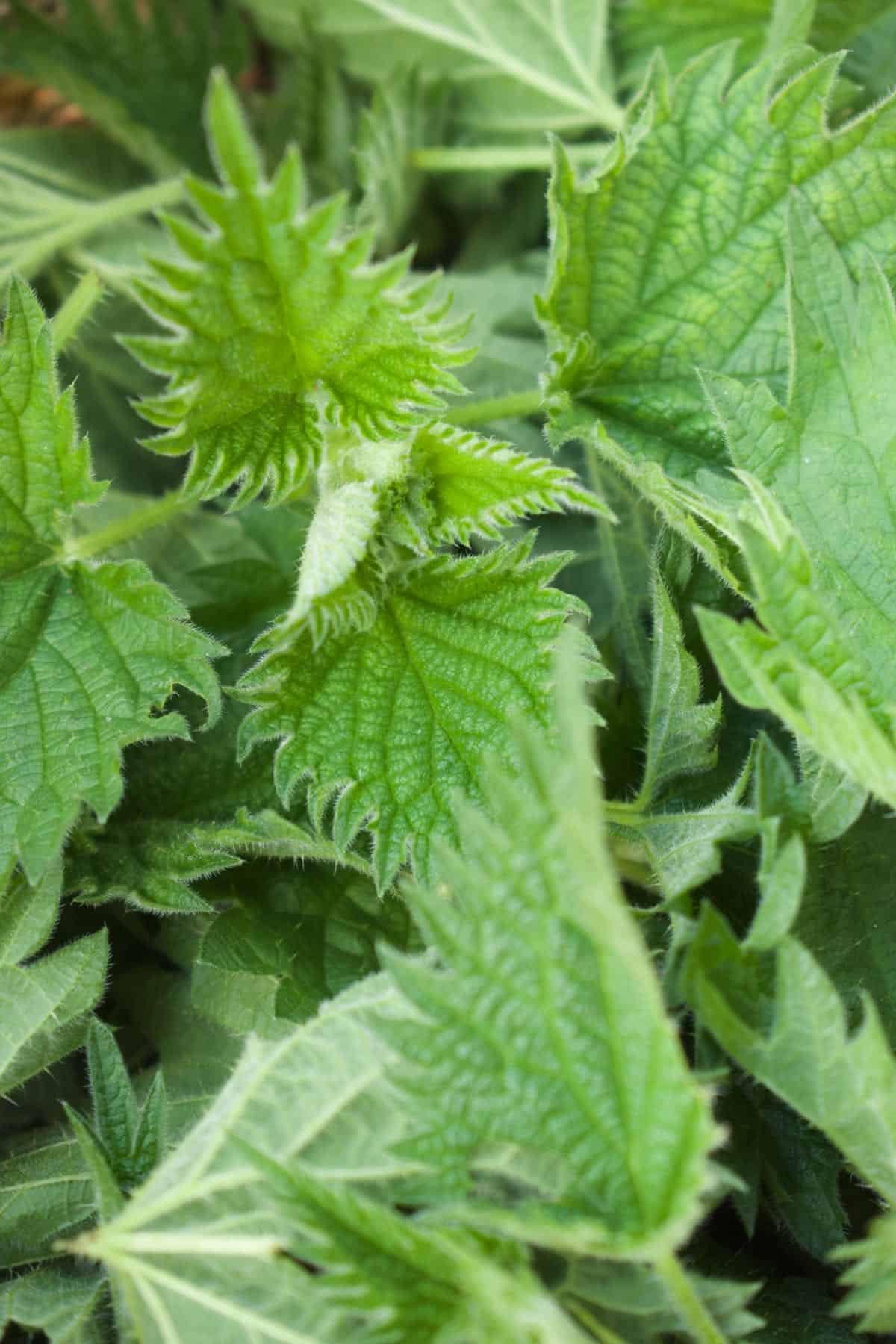Stinging Nettle soup
I enjoy foraging and wild harvesting. I am always on the lookout for wild greens, berries, herbs, and wild mushrooms.
It’s absolutely essential that you kind accurately identify your plants. Be sure you know what you are picking, and what parts are edible. Know what the look-alike plants are (and if they are poisonous!). Never eat anything you are not certain about. It’s better to be safe than sorry, some plants are poisonous. I spend a lot of time educating myself. I’ve taken classes, cross reference sources online and in books, and have gone wild-harvesting with guides who understand wild plants. Many people are afraid of wild harvesting, but I think if you spend the time educating yourself, it can be very safe. It’s worth the investment of your time to understand and to develop a relationship with these plants and integrate them into your diet. Yes, you need to be careful, but you don’t need to be so fearful. Our ancestors survived and thrived on wild-harvesting!
In addition to knowing your plants, it is also important to respect the land, plants, and animals. Make sure you have permission before you take, both from the land-owner and from the plant (yes, ask the plant!). Never take all of any plant in any area. A general rule of thumb is to only take 1/4 of any plant. Leave some behind for regeneration and for the wild animals that rely on these for foods.
If you are new to foraging, nettles are probably one of the easiest wild plants to start with.
What are the benefits of stinging nettles?
Nettles:
are an excellent source of iron, calcium and vitamin A and vitamin C.
contain essential amino acids (those proteins everyone is so worried about)
studies indicate that stinging nettle extract can raise blood antioxidant levels
reduce inflammation
Cooking them destroys their sting, but you will still want gloves to harvest them.
Stinging nettle soup is one of the easiest ways to cook with nettles.
Grab some gloves, they’re easy to find and pick!
PICKING NETTLES
Stinging nettles are known by the scientific name Urtica Dioica and are often simply called nettles. You can probably already recognize them easily.
HOW TO IDENTIFY—see the picture below!
Nettles have pointed leaves with toothed edges and tiny hairs on the underside and stem. The main lookalike that you could mistake nettles for is a member of the dead nettle family Lamium, which are also edible, but don’t sting.
Again, always use caution when harvesting food from the wild. You will want to be 100% sure that you make the correct identification. Be responsible!
WHEN AND WHERE TO PICK
Nettles can be found growing throughout the year, but are best picked in the spring, when the young leaves are at their most tender.
Don’t pick nettles when the plants are flowering. When they start flowering, the leaves develop cystoliths, which can irritate the urinary tract.
Avoid picking from polluted areas like roadsides or dog walking areas (you know what dogs do on the side of the road).
Wear thick gloves and long sleeves. Use scissors to remove the tender nettle tops. Snip the main stem under the top four or six leaves.
Collect the leaves into a basket or cloth bag. Cut off the thicker stem and keep the tender leaves.
EASY VEGAN NETTLE SOUP
Make the most of free, foraged greens with this fresh & easy nettle soup. With just a few ingredients and 15 minutes cooking time you can have this simple but tasty dish ready to enjoy.
This stinging nettle soup is one of the easiest ways to cook with nettles.
INGREDIENTS
This wild nettle soup is the perfect simple recipe for early spring.
Here's what you'll need to make it:
2 cups Nettles, chopped (use scissors and gloves!)
1 medium Onion, diced—you can also use shallots, leeks, chives, or ramps
1-2 cups Shiitake mushrooms, diced (any mushroom will do!)
1 TBSP Olive oil
1-2 medium Potatoes, chopped
2 TBSP Vegetable stock - bouillon paste, or 2 cups broth water
1-2 cups additional water to taste
1 TBSP of poultry seasoning (a combination of rosemary, sage, and thyme)
Salt & Pepper to taste
A squeeze of lemon to enhance vitamin absorption and a little extra tang
Directions
Step 1 - Heat olive oil in a medium saucepan and add the diced onion and fry for a couple of minutes until translucent.
Step 2 - Add the chopped potato, mushrooms, carrots, vegetable stock powder (bouillon) and water, cover with a lid and simmer for 10 minutes.
Step 3 - Check the potato is tender, then add the washed nettle leaves and cook for another minute until they have wilted down
Step 4 - Add the lemon juice and blend with an immersion blender until you have a smooth soup
Add salt and pepper to taste, then serve with a drizzle of extra virgin olive oil and some seeds on top. You can use nigella seeds, but sunflower and pumpkin are also great.
FAQS
What do nettles taste like?
Nettle has a flavor similar to spinach. The young, fresh leaves are a little more sweet and mild.
Where can I get nettles?
Nettles are a widespread plant and can be found growing wild in garden, woodland, fields and hedgerow across the world. You can pick your own fresh stinging nettles in spring, or keep an eye out for them in your local farmers market in nettle season.
Give it a try and let me know what you think!
Nettle Soup
Nettles in the wild


